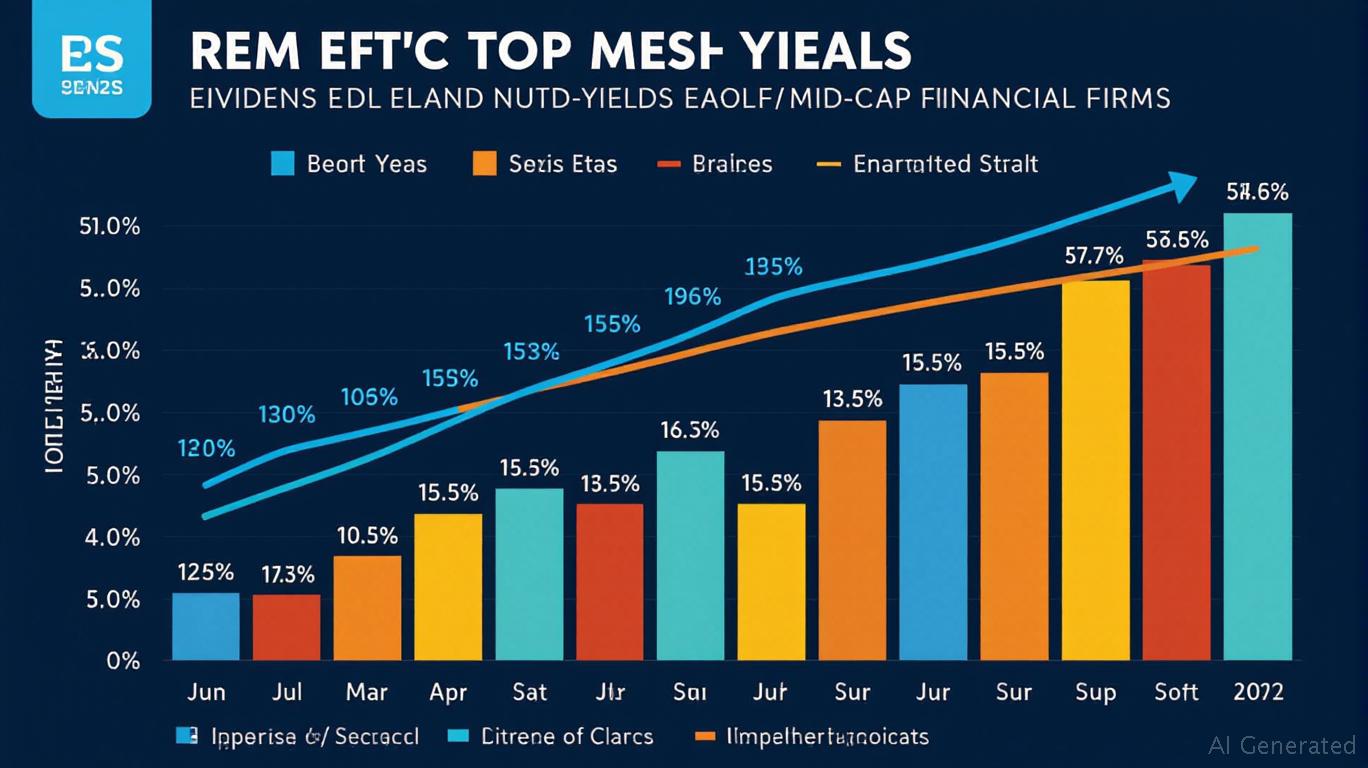REM: Navigating High-Yield Potential in a Volatile Rate Environment
The iShares Mortgage Real Estate ETF (REM) offers investors a concentrated play on U.S. mortgage real estate investment trusts (REITs), delivering a robust 9.25% dividend yield as of July 2025. This yield, nearly double the ETF category average, positions REM as a compelling high-yield option. However, its suitability hinges on navigating the Federal Reserve's cautious rate policy and the looming risk of a recession. Below, we dissect REM's composition, its exposure to interest rate dynamics, and the risks that demand careful consideration.
Portfolio Composition: A High-Risk, High-Reward Concentration
REM tracks the FTSE NAREIT All Mortgage Capped Index, with 34 holdings dominated by mortgage REITs. The top 10 positions—led by
(NLY, 15.58%), Corp (AGNC, 10.88%), and (STWD, 9.55%)—account for 66% of assets. This concentration amplifies sector-specific risks, as 99.88% of the portfolio is tied to the financial sector, with no diversification into large-cap equities or non-U.S. markets.
The ETF's expense ratio of 0.48% is reasonable but slightly above its category average, while its beta of 1.5 signals heightened volatility relative to the broader market. Historically, REM has underperformed, with a -5.13% return over three years versus a positive category average. Investors must weigh this track record against its elevated yield and current macroeconomic tailwinds.
The Fed's Rate Outlook: A Double-Edged Sword
The Federal Reserve's July 2025 decision to hold the federal funds rate at 4.25%-4.5% reflects a cautious pivot toward easing. Minutes from the meeting revealed a divided FOMC, with most officials anticipating two rate cuts by year-end to address slowing GDP growth (revised to 1.4% for 2025) and persistent inflation (projected at 3.1%).
For mortgage REITs, lower short-term rates could widen the yield curve, boosting net interest margins. These firms borrow short-term to invest in long-term mortgage-backed securities (MBS). A steeper curve reduces their cost of capital while preserving returns on MBS holdings.
and , REM's top constituents, currently offer 14.5% and 14.3% dividends, respectively—far exceeding the 10-year Treasury's 4.39% yield.However, the Fed's caution underscores risks. Inflation's stubbornness (driven by tariffs and geopolitical tensions) could delay cuts, while a recession might reduce mortgage refinancing activity, squeezing REIT revenues. The Fed's balance sheet runoff—continuing despite rate stability—adds uncertainty to MBS valuations.
Key Risks: Volatility, Underperformance, and ESG Blind Spots
- Market Sensitivity: With a beta of 1.5, REM will amplify market swings. A recession or sudden rate hike could trigger sharp declines.
- Sector Overconcentration: The ETF's all-in bet on mortgage REITs leaves no buffer against sector-specific shocks, such as rising defaults or regulatory changes.
- Dividend Sustainability: While REM's yield is enticing, its top holdings face payout risks. NLY's 101% payout ratio exceeds AGNC's 81%, raising concerns about capital preservation.
- ESG Exposure: REM explicitly excludes ESG criteria, a drawback for investors prioritizing sustainability-linked risks like climate change's impact on housing markets.
Investment Strategy: A Tactical, Cautious Allocation
REM's high yield and potential rate-driven upside make it a viable tool for income-seeking investors—but only with strict portfolio discipline.
- Allocation: Limit REM to 5-10% of a fixed-income allocation to mitigate volatility. Pair it with stable assets like short-term Treasuries or municipal bonds (e.g., the ETF MUB).
- Focus on Fundamentals: Prioritize REITs with stronger liquidity and sustainable payout ratios. AGNC, with $6 billion in liquidity and an 81% payout ratio, is a better core holding than NLY.
- Monitor the Fed: Track inflation data (e.g., core PCE) and labor market trends (e.g., unemployment claims). A decisive Fed pivot to cuts could validate REM's rally.
Conclusion: High Reward, High Risk
REM is a high-yield ETF with asymmetric potential in a Fed-easing environment. Its 9.25% dividend and exposure to rate-sensitive REITs offer income upside, but its concentrated portfolio and sensitivity to macro risks demand caution. Investors should treat REM as a tactical satellite holding, pairing it with defensive assets and favoring individual REITs with robust balance sheets. In a world of mixed economic signals, REM rewards those willing to stomach volatility for yield—but only if the Fed's dovish bias materializes.
Final thought: The mortgage REIT sector's survival hinges on the Fed's ability to navigate inflation without stifling growth. REM's success in 2025 will be a litmus test for both its managers and policymakers.
Sign up for free to continue reading
By continuing, I agree to the
Market Data Terms of Service and Privacy Statement

Comments
No comments yet